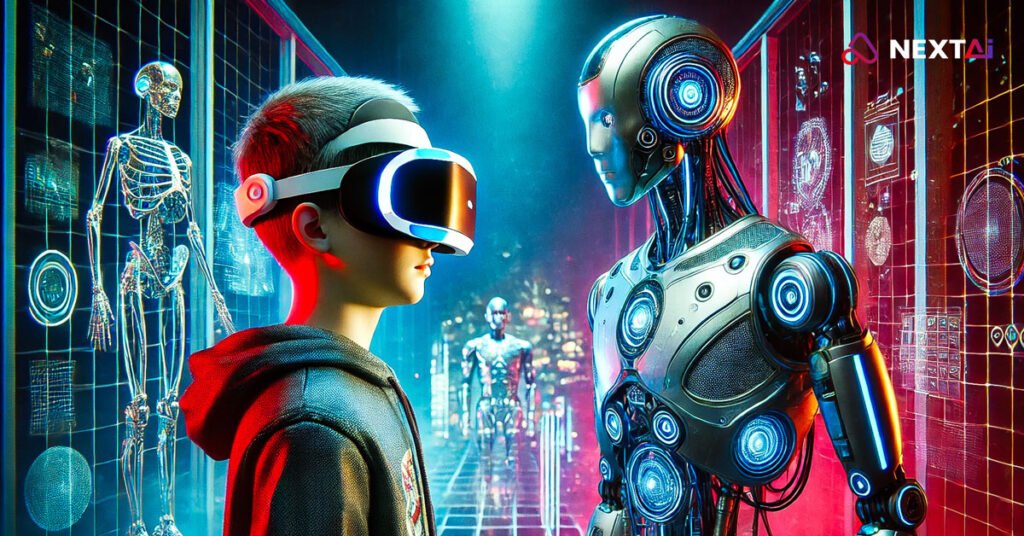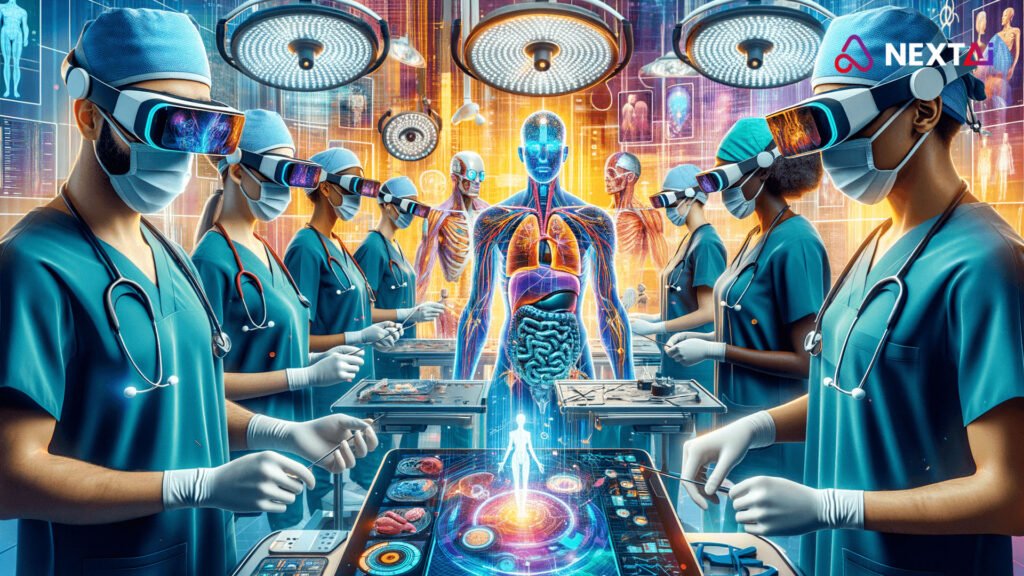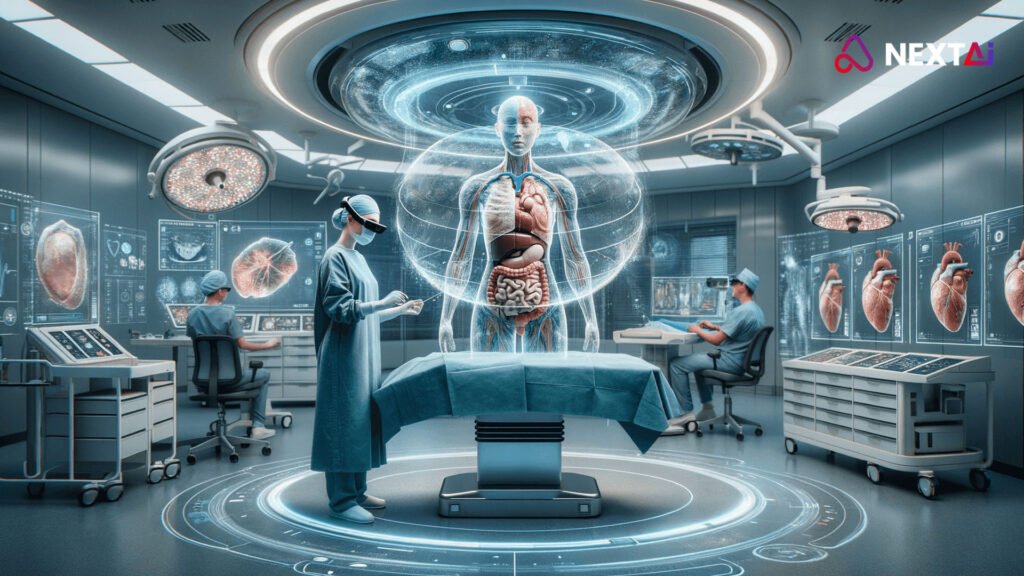
The Intersection of AI and Augmented Reality
By Rajiv Rajkumar Bathija – Visionary with 35 Years of Experience | AI and Augmented Reality

Artificial Intelligence (AI) and Augmented Reality (AR) are two of the most transformative technologies of our time, and together they are creating immersive, interactive experiences that are reshaping industries. From education to healthcare and entertainment, the combination of AI and AR is driving new possibilities that enhance how we learn, heal, and have fun. In this blog, we explore the intersection of AI and AR, highlighting how they are coming together to create transformative experiences across different sectors.
AI and AR: A Powerful Combination
AI and AR are distinct technologies that, when integrated, can provide even more impactful solutions. AR overlays digital information onto the real world, while AI makes sense of that information, providing context, interaction, and personalization. Together, they are changing how we interact with the world around us in unprecedented ways.
Immersive Experiences in Education
– Enhanced Learning Environments: The integration of AI with AR is revolutionizing education by creating engaging and immersive learning environments. AI can analyze student data to personalize AR-based lessons, ensuring that each student gets content tailored to their learning style and needs. Imagine a history class where students can explore ancient civilizations in 3D, guided by an AI tutor that answers questions and adapts the content in real time based on student curiosity.
– Interactive Tutorials: AI-powered AR applications are also being used to provide interactive tutorials for subjects like mathematics, physics, and biology. Students can visualize complex concepts, such as molecular structures or planetary systems, in augmented reality, making learning more intuitive and engaging. AI acts as the facilitator, adjusting the difficulty level and providing insights to ensure students grasp the concepts effectively.
– Skill Training: AR, combined with AI, is also used in skill-based training, such as medical education and mechanical engineering. Medical students can use AR headsets to visualize surgeries with AI providing real-time feedback and insights, helping them gain hands-on experience in a safe, controlled environment.
Transforming Healthcare
– Surgical Assistance: AI and AR are making waves in healthcare, especially in surgical procedures. AR can project a 3D visualization of a patient’s anatomy over the surgeon’s field of view, while AI provides real-time analysis and guidance based on the patient’s medical history and real-time sensor data. This combination improves precision, reduces the risk of errors, and enhances patient outcomes.
– Patient Care and Rehabilitation: AR applications, guided by AI, are being used to assist in physical rehabilitation. Patients recovering from injuries can follow AR-guided exercises tailored to their needs, while AI monitors their progress, ensuring that they are performing the exercises correctly and making necessary adjustments to their therapy plan.
– Mental Health and Therapy: AI and AR are also being used in mental health treatments. Patients can experience immersive environments that help reduce anxiety or cope with PTSD, with AI analyzing their responses and tailoring the experience to maximize therapeutic benefits.
Revolutionizing Entertainment
– Augmented Reality Games: The entertainment industry is leveraging AI and AR to create immersive gaming experiences that adapt to player behavior. AI algorithms analyze player actions and preferences, adjusting the game’s difficulty level and storyline to provide a highly personalized experience. Games like Pokémon Go have laid the foundation for this integration, with future games expected to take personalization and immersion to new heights.
– Interactive Storytelling: AI-driven AR applications are also changing the way we consume media and stories. Imagine an AR experience where you can walk through a story, interact with characters, and make decisions that affect the storyline. AI powers these dynamic narratives, ensuring that each user’s experience is unique based on their choices and interactions.
– Live Performances and Events: AR, coupled with AI, is enhancing live performances and events. Concert-goers can experience augmented visual effects that adapt to the music in real time, with AI analyzing the beat, rhythm, and audience reactions to create an unforgettable, immersive experience.

Ethical Considerations and Challenges
While the integration of AI and AR holds tremendous potential, it also raises ethical questions that must be addressed:
1. Privacy Concerns
AI-driven AR applications rely on data collection to provide personalized experiences. This includes location data, behavioral data, and even biometric information. Ensuring that user data is collected and stored securely, and that privacy regulations are followed, is crucial to prevent misuse.
2. Addiction and Overreliance
The immersive nature of AI and AR can lead to overuse or addiction, particularly in entertainment and gaming applications. Developers and users must be mindful of the potential for overreliance on these technologies and implement measures to promote healthy usage.
3. Bias in AI Algorithms
AI models used in AR applications can be subject to bias if they are trained on unrepresentative data. This can result in unequal experiences or discriminatory outcomes, particularly in educational or healthcare settings. Addressing algorithmic bias and ensuring that AI models are inclusive is essential to provide fair experiences for all users.
The Future of AI and AR Integration
The future of AI and AR integration is full of possibilities. As AI models continue to improve, they will become even better at understanding and predicting user needs, making AR experiences more seamless and personalized. In education, this could mean fully immersive classrooms where every student’s journey is uniquely tailored. In healthcare, we could see more advanced AR-guided surgeries with AI providing predictive insights that enhance outcomes.
The entertainment industry will also see further innovation, with AI and AR being used to create hyper-personalized content that responds to individual preferences in real time. By addressing ethical considerations and prioritizing responsible development, AI and AR can continue to enhance our experiences, making them more interactive, informative, and enjoyable.

Conclusion
The intersection of AI and AR is creating new opportunities across various sectors, from education to healthcare and entertainment. By combining the immersive capabilities of AR with the intelligence of AI, we can create experiences that are more personalized, interactive, and effective. However, as we continue to innovate, it is crucial to address the ethical challenges associated with these technologies to ensure that they are used responsibly and inclusively.
As AI and AR continue to evolve, we can look forward to a future where technology seamlessly blends with our daily lives, enhancing the way we learn, heal, and enjoy our world.
—
Follow me for more insights on how emerging technologies are shaping the world.
Feel free to share your thoughts or reach out—I’d love to hear your perspective on how AI and AR are transforming our experiences!

